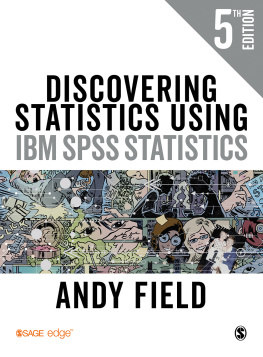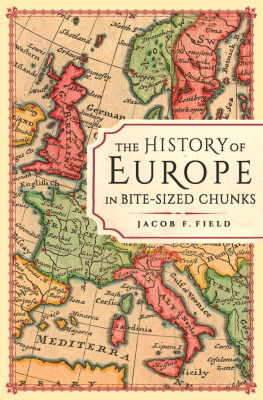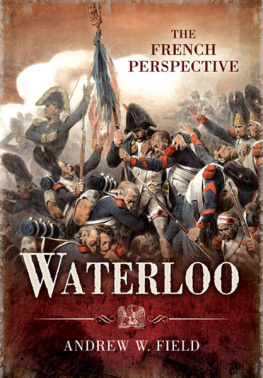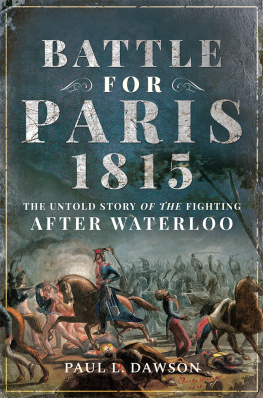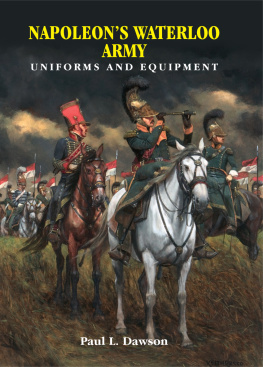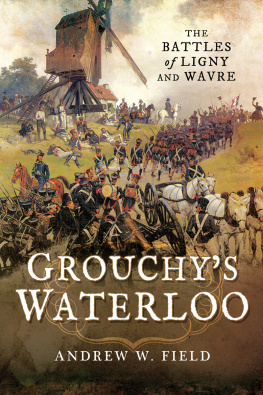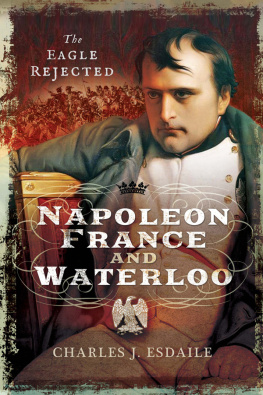
To Mandy, my saviour
First published in Great Britain in 2014 by
PEN & SWORD MILITARY
An imprint of
Pen & Sword Books Ltd
47 Church Street
Barnsley
South Yorkshire
S70 2AS
Copyright Andrew W. Field, 2014
ISBN 978-1-78346-384-8
eISBN 9781473838499
The right of Andrew W. Field to be identified as the author of this work has been asserted by him in accordance with the Copyright, Designs and Patents Act 1988.
A CIP catalogue record for this book is available from the British Library.
All rights reserved. No part of this book may be reproduced or transmitted in any form or by any means, electronic or mechanical including photocopying, recording or by any information storage and retrieval system, without permission from the Publisher in writing.
Typeset by Concept, Huddersfield, West Yorkshire, HD4 5JL.
Printed and bound in England by CPI Group (UK) Ltd, Croydon CR0 4YY.
Pen & Sword Books Ltd incorporates the imprints of Pen & Sword Archaeology,
Atlas, Aviation, Battleground, Discovery, Family History, History, Maritime,
Military, Naval, Politics, Railways, Select, Social History, Transport, True Crime,
and Claymore Press, Frontline Books, Leo Cooper, Praetorian Press,
Remember When, Seaforth Publishing and Wharncliffe.
For a complete list of Pen & Sword titles please contact
PEN & SWORD BOOKS LIMITED
47 Church Street, Barnsley, South Yorkshire, S70 2AS, England
E-mail: enquiries@pen-and-sword.co.uk
Website: www.pen-and-sword.co.uk
Contents
List of Illustrations
Maps
Figures
List of Plates
Colour
Black & White
Introduction
The idea for this book came from my membership of the Napoleonic Wars Forum (www.napoleonicwarsforum.com). A review of Mike Robinsons The Battle of Quatre Bras 1815 was posted that sparked a discussion on the merits of the book. I had been on a battlefield tour of Quatre Bras and Waterloo with a group that included Mike a couple of years previously and had subsequently bought and enjoyed reading his account of the battle. As my own particular interest is the French perspective on the 1815 campaign I was rather disappointed that he had generally ignored this angle and restricted himself to an otherwise detailed and fascinating account from the British and allied perspective, but one that gave so little information on their opponents. To be fair he acknowledged this shortfall in the introduction of his book, writing:
Despite my best efforts, little of value could be found in French sources... I chose therefore, to concentrate on events seen from the allied side of the hill, using French accounts to corroborate where necessary. It is for this reason that there is no examination of the inactivity of the French on the morning of 16 June, no analysis of the peregrinations of General dErlon and no space devoted to the increasingly desperate flow of orders from Imperial Headquarters to Marshal Ney.
Given that it would be natural for British readers to be most interested in the British perspective, I was therefore pleasantly surprised, and a little reassured, to see that the comments on the forum reflected my own. Reviews of his book on other websites criticised him for failing to include any detail on the French forces, personalities, tactics or strategy and this convinced me that there was a growing demand for a more objective view of history, and particularly accounts that draw on the experience and perspectives of all protagonists. This interest often evolves into a broader study of the campaign and, in the case of 1815, beyond an apparently insatiable appetite for books on Waterloo, has also manifested itself in a demand for further detail on all aspects of the campaign including the battles of Ligny and Quatre Bras, both of which were to have a critical role in determining the way the campaign was to climax at Waterloo. Indeed, for a full understanding of Waterloo, a study of the whole of the short campaign is vital.
For some inexplicable reason, French officers and soldiers were nowhere near as prolific in writing about their experiences in either volume or detail as their British and allied counterparts, and because of this it is true to say that there are few detailed and atmospheric first-hand accounts of the fighting at Quatre Bras. In fact, many French officers and soldiers, who wrote at length on their experiences at Waterloo, allocate only a few lines to Quatre Bras, and given how cataclysmic Waterloo was in their experience, it is perhaps unsurprising that Quatre Bras was completely overshadowed by it. Consequently, there is no scope to deal with that battle in the same way that I was able to do in Waterloo: The French Perspective , for which I was able to draw on a reasonably-sized pool of French eyewitness accounts. Quatre Bras was a much smaller affair and, due to what was perceived as prevarication and lack of resolve in the higher levels of command, the battle was viewed with frustration by those French soldiers who fought there. In fact, as we shall see, the action at Quatre Bras did deliver some significant strategic success for the French, but for the soldiers who fought there it felt like a defeat, and the strategic success it brought fell well short of Napoleons somewhat over-inflated hopes. The failings of that day were considered by many French historians to be a major contributing factor to the disastrous defeat at Waterloo.
We must accept then, that there is substantially less eyewitness detail of the fighting from the French side than the allied, and this will give us far less clarity on some of the tactical aspects of the battle. The ebb and flow of the fighting of a major battle, enhanced by the exciting yet terrifying accounts by those who were there, will always be of interest to students and enthusiasts of military history. Yet there is always significance to a battle beyond the intensity of the fighting and the direct outcome of the combat. Whats more, it is inevitable that most interest tends to centre on the largest and most decisive battles, as it was these that almost inevitably had the greatest impact on the history of nations, both winners and losers. Consequently, the smaller battles and engagements that shaped subsequent events, but appear somewhat less significant, are often overlooked or neglected. And yet it is often these smaller battles that are important in understanding how or why the larger-scale engagements turned out the way they did. Thus Aspern-Essling and Znaim in 1809, and Smolensk in 1812, are overshadowed by Wagram and Borodino. This is particularly true for the campaign of 1815; the battles of Ligny and Quatre Bras, and the manoeuvring prior to and after these battles, had a significant effect on the outcome of Waterloo.
However, if Waterloo is studied in isolation it is quite possible to believe that Napoleon had a more than even chance of success; he appeared to hold the initiative as the attacker, he had a small but appreciable advantage in numbers, and an apparently more homogeneous and better-motivated army. But this most famous battle, fascinating as it is in itself, was shaped and arguably decided by the manoeuvrings, mistakes and outcomes of the previous three days, to the point where a full and comprehensive understanding of these three days brings the student of the campaign to the conclusion that Napoleon was almost inevitably going to lose at Waterloo. Whilst this is rather simplistic and established with the benefit of hindsight, it is hard not to argue that the sequence of actions and events suggests there was a certain inevitability about the outcome, even if it was not obvious at the time.


